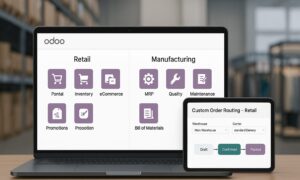Clothes manufacturing technology is a field of study that focuses on the processes and practices of producing clothing and textiles. These processes include pre-production, production, and quality control. There are several types of clothing manufacturing technologies and they each have their own pros and cons.
Pre-production
Pre-production of clothes manufacturing technology involves a variety of steps to create a finished garment. It is an efficient process that helps manufacturers deliver high-quality goods in a short amount of time.
The objective of the pre-production phase is to develop a design that meets the customer’s specifications. This includes developing a production plan and appointing staff.
The next step is sourcing fabrics. These are usually purchased before the actual production. Once sourced, the fabric is graded for quality. A manufacturer must also determine tooling needs for each stage of the process.
Fabric is then cut into large rolls. This is done by using special machines. Depending on the number of plies required, the spreading equipment may include bars, pins, and weight.
Next, the cut parts are sent to the sewing room for finishing. After the sewing operation, the garments are wrapped in plastic and packed in protective boxes.
Once the production is complete, it is shipped to a client distribution center. Internal quality checks are performed to make sure no garments included in the box are incomplete.
Manufacturing
Manufacturing technology for clothes has become more sophisticated in recent years. Whether it’s using laser cutting, 3D printing, or augmented reality, apparel manufacturers are able to customize clothing faster and more efficiently than ever. These innovations have helped streamline the production process, reduce costs, and improve the efficiency of their manufacturing facilities.
It’s not uncommon to find consumers looking for ways to customize their wardrobes. Manufacturers are responding to this trend with a variety of customization options. Some of these include laser cutting and 3D printing, as well as augmented reality and virtual reality.
The 3D printing method allows designers to create complex designs and prototypes quickly. The technology isn’t limited to just clothing; manufacturers can also use it to create footwear, accessories, and more.
A 3D rendering of a product is a more realistic depiction of the end result. This technology has allowed designers to test their designs before they go into production.
Using computer-aided design (CAD) and computer-aided manufacturing (CAM) systems, companies can streamline many processes. They can also create digital models that are accessible to patternmakers, sewers, and engineers.
Quality control
Quality control in clothes manufacturing technology refers to the process of checking and ensuring the quality of products and is particularly high in a sustainable fashion. Keeping good standards for quality reduces the rate of defects in the industry and improves the efficiency of the production process. It also reduces the cost of materials and saves the company from litigations and other penalties.
The quality of garments depends on three aspects: visual quality, reliability, and performance. In order to achieve these qualities, all the components must be tested before being included in the product.
There are several ways to carry out quality control. One of the most common methods is through inspections. Using a third-party quality inspection can be a helpful method for conducting additional tests. A third party can also develop a quality manual that includes guidelines on how to conduct quality tests and how correct any problems.
When checking raw materials, it is important to check them for a number of important points, including color and size. If a color change occurs, it can affect the finished garments. Also, it is important to test the fabric and absorbency of the garment.
Costs
When it comes to manufacturing clothes, technology plays a significant role. With today’s advancements, production is faster and smoother. It also reduces the chances of defects. However, the cost of producing clothes depends on a number of factors.
Cost includes the time it takes to produce a product and labor. In addition, the quality of the fabric and the type of trims used also impact the price. The more complicated the garment, the higher the price.
Other costs include labor, transport, and packaging. Retailers also need to account for markdowns, import duties, and marketing.
Many American manufacturers use fair labor practices. They pay living wages to their workers. If you are planning to start a clothing line, keep in mind that you will need to invest some money to create your collection. This may include consulting with an emerging designer and hiring more staff to support the operation.
Choosing the right clothing design can help you stay within your budget. You can also choose simple fabrics.


































